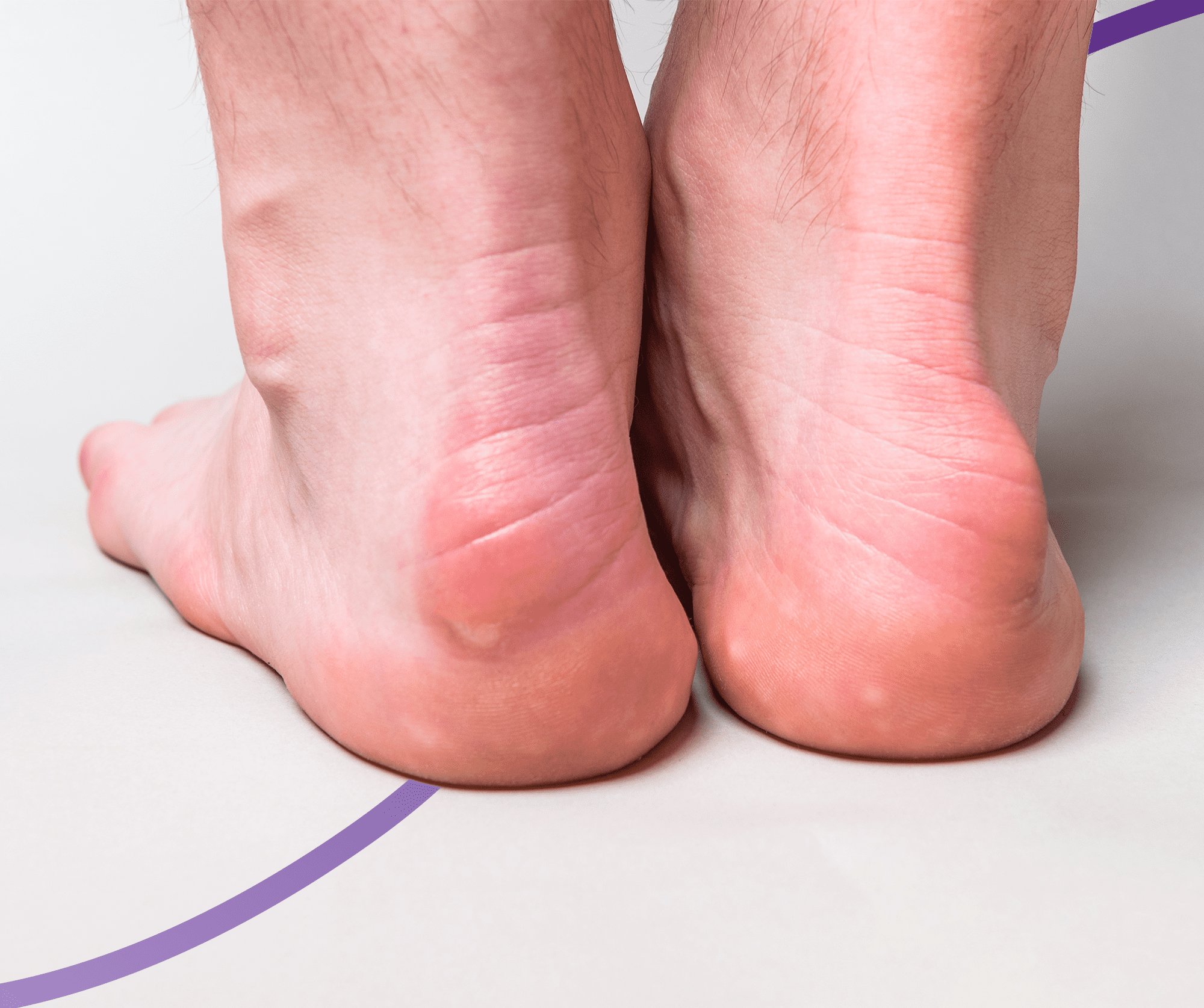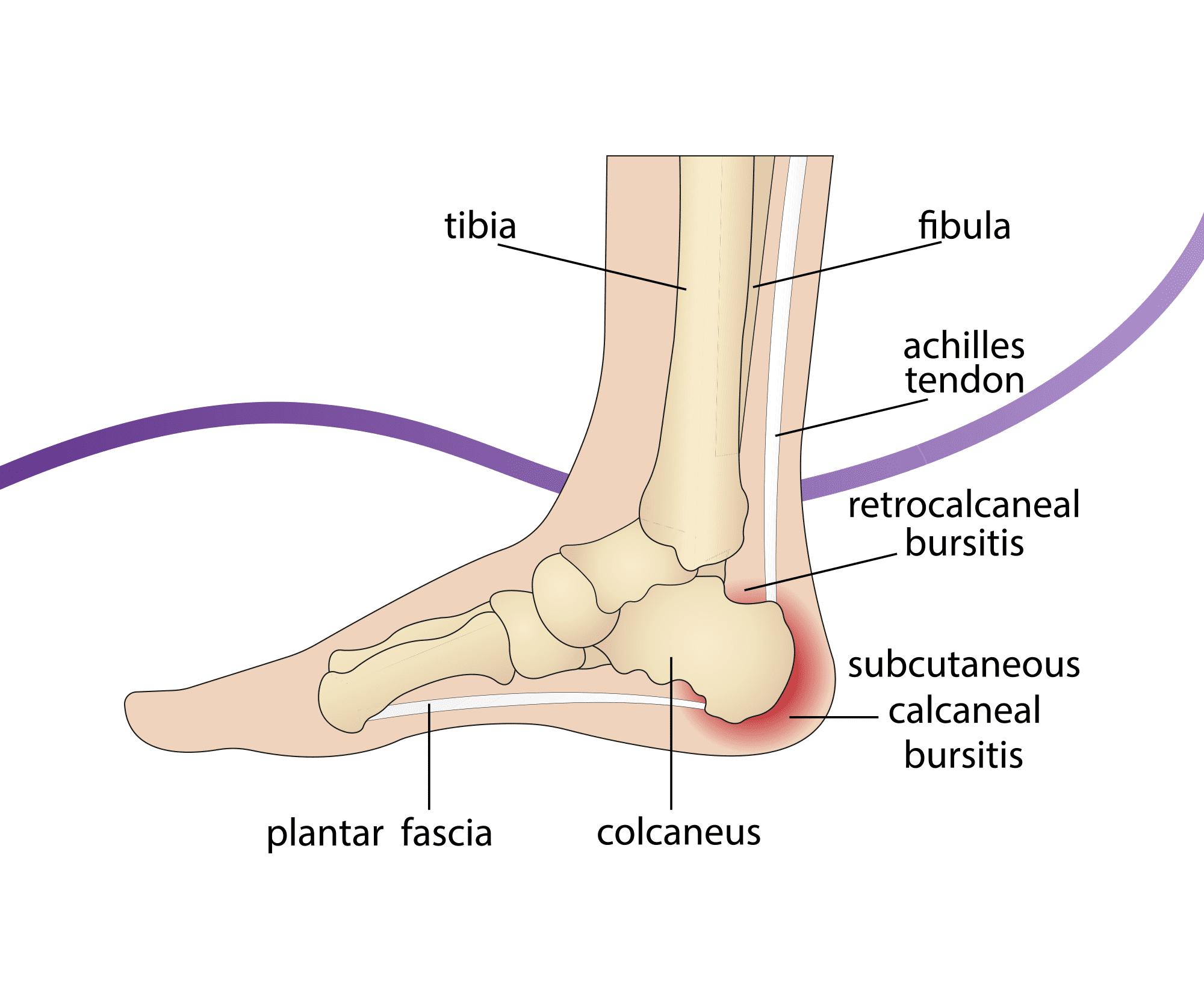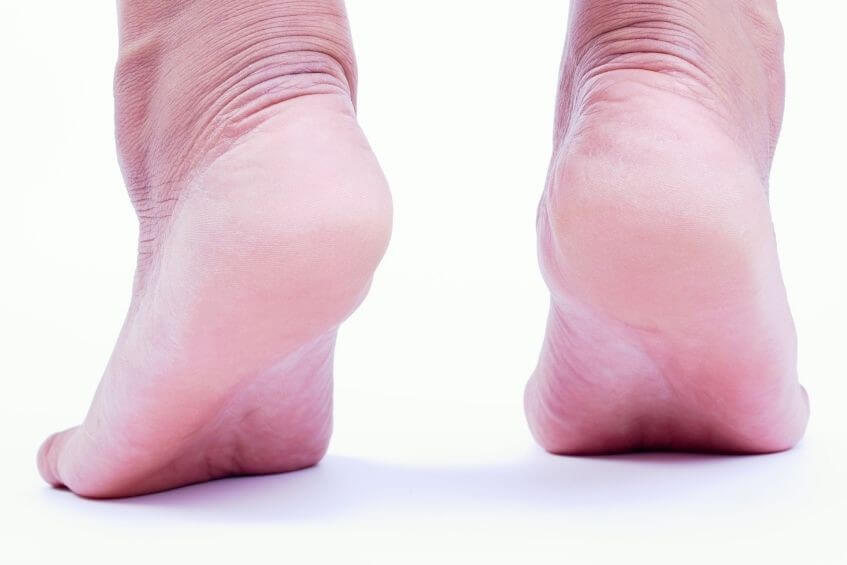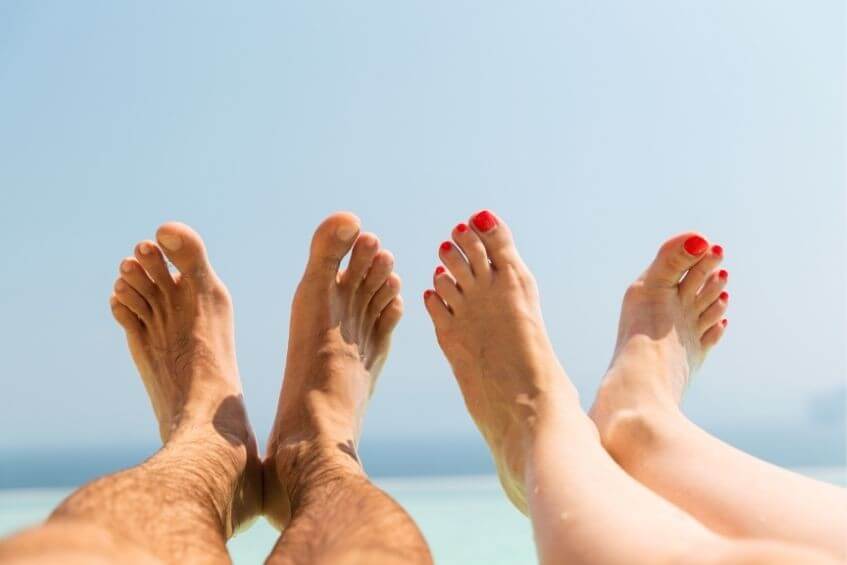
Jump to section
The back of the heel is not an area we look at too often, so we often see many patients with a bump at the back of their heel who are unsure
how long it has been there, what has caused it, or even if it’s something they’ve had their whole life. Regardless of how long
it has been present, having a bump at the back of the heel can be worrying, and make it difficult to fit shoes comfortably.

A Haglund’s deformity is a bony enlargement (bump) that develops right at the back of the calcaneus - your heel bone. These bumps can vary in size, and are both palpable and noticeable when looking. While the term ‘Haglund’s deformity’ was given because the condition was first discovered by Patrick Haglund, the term pump bump was coined because of the pump-style shoes with firm straps that tend to rub against the back of the heel, and contribute to painful symptoms.
Interestingly, the bony enlargement itself is actually asymptomatic and painless. When symptoms present, it is actually coming from the surrounding structures, such as the Achilles tendon or the bursa at the back of the heel, which can become irritated from the way the presence of the bump causes them to be used, or from shoe straps rubbing against them. As such, you may experience:
The condition is still poorly understood by researchers, without a clear aetiology or understanding as to why the particular bony section of the back of the heel where the Achilles tendon inserts becomes enlarged. While it is often considered idiopathic (meaning that it can occur spontaneously), what is known is that the bump can cause the surrounding tissues to become irritated from rubbing against footwear, which is why we can suddenly develop symptoms when switching to a new pair of shoes. It is thought that this repetitive rubbing at the back of the heel may play a big role, too.
Several risk factors have been suggested to play a role in the development of a pump bump, including:
A Haglund’s deformity can be confidently diagnosed by our podiatrists from a clinical examination, and your history. Medical imaging may be used to provide further clues about the cause of the pain - whether that is from an inflamed bursa, damage to the Achilles tendon at its insertion, or something else. Your podiatrist will thoroughly examine your heels, going beyond noting the presence of the deformity to uncovering what is causing your painful symptoms, to best guide your treatment and recovery.
Treating a Haglund’s deformity really means treating the damaged tissues at the back of the heel in order to relieve symptoms, and then preventing them from recurring. Your podiatrist will discuss the best treatment options for you following your assessment, which may involve:
Once the pain has gone, your podiatrist will then work with you to help set you up for success in the future and prevent your symptoms from returning. This includes educating you on the how’s, what’s and why’s of having a pump bump, so you know exactly what you should be doing and avoiding, including the best shoes for your feet. As experts in foot health, working with a podiatrist means that you stay supported every step along the way, to help you get the best outcomes for your foot health.

Our feet are the foundation for the entire body, so it's important that they have enough strength to tolerate our activity levels. Use
these three exercises to help strengthen your feet.

Not everyone needs orthotics, but they can play an integral role in treating or relieving pain in several foot and lower limb conditions.

The heat and humidity of an Australian summer makes it a prime time for issues to arise, so our newest podiatrist Lucy has put together
seven helpful tips to keep your feet healthy and problem free throughout summer.
| Monday | 7:30am - 6:30pm |
| Tuesday | 7:30am - 6:00pm |
| Wednesday | 7:30am - 6:30pm |
| Thursday |
7:30am - 6:00pm |
| Friday | CLOSED |
| Saturday | CLOSED |
| Sunday | CLOSED |
Ground Floor, 344 Queen Street,
Brisbane City QLD 4000
| Monday | 7:30am - 6:00pm |
| Tuesday | 7:30am - 6:00pm |
| Wednesday | 7:30am - 6:00pm |
| Thursday |
7:30am - 6:30pm |
| Friday | 7:30am - 5:30pm |
| Saturday | 7:30am - 4:30pm |
| Sunday | CLOSED |
Newmarket Village, 114/400 Newmarket Rd, Newmarket QLD 4051